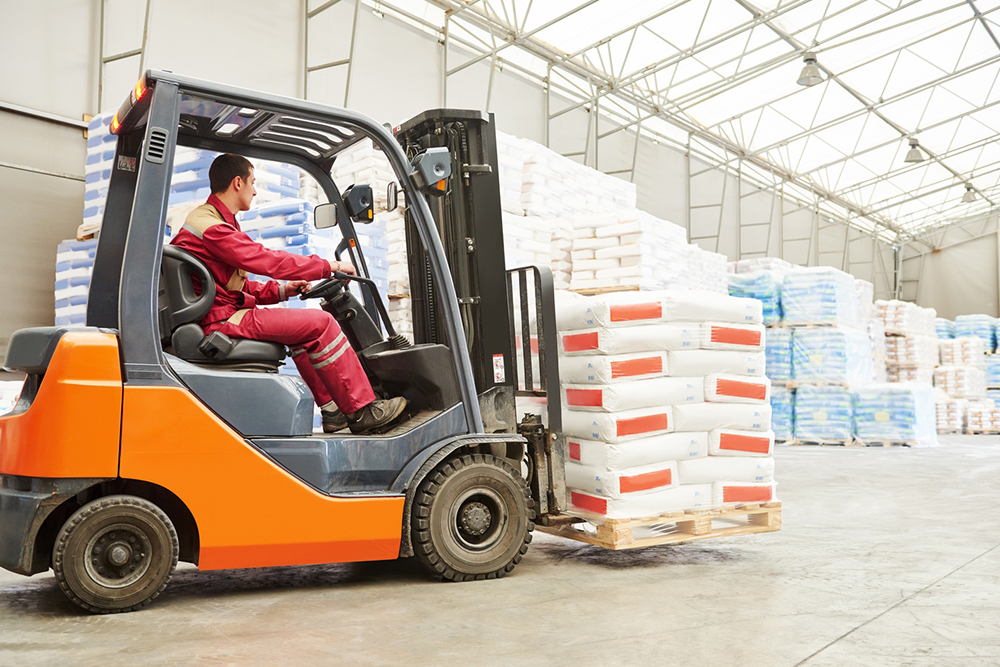Forklifts – Types, Uses, and Costs
Forklifts, first manufactured in the early 20th century, are powered industrial trucks that are among the most useful pieces of equipment. They help lift and move heavy objects and multiple goods, significantly reducing human effort and improving efficiency. Forklifts are available in various types, each designed to handle different types of jobs and different sizes of goods. Some are even designed specifically for the terrain in which they must work.
1. Pallet jack forklift
Also called pump trucks, pallet jacks are small forklifts that run on batteries or are powered manually. Pallet jacks are mainly used in warehouses to move multiple pallets.

Manually or hand-powered pallet jack forklifts require a simple push to move their handle. On the other hand, powered pallet jacks are mostly functional on 24 volts and run on powerful batteries, ensuring efficient operation and minimal downtime. A new battery-powered pallet jack can cost somewhere around MXN25,000.
2. Counterbalance forklift
The design of a counterbalance forklift, featuring extended forks at the front, is ideal for lifting heavy loads.
Counterbalance forklifts are only designed for indoor use and are mostly used in warehouses to move pallets and boxes. These forklifts are available at around MXN64,000.
3. Side loader forklift
As the name suggests, side loader forklifts have fork carriages attached to their sides, allowing the operator to lift and move things sideways without turning the entire forklift. As a result, side loader forklifts are particularly useful for operating in narrow aisles that do not have enough space to turn the lift. They can raise their fork carriages quite high, making them ideal for loading and unloading goods on higher shelves.
Side loader forklifts are also designed for indoor use and are mostly used in steel industry warehouses. The cost of a new sideloader forklift is approximately MXN825,000.
4. Order picker forklift
While most forklifts are meant for lifting loads and pallets, order pickers are designed differently. These indoor forklifts, which are also mostly used in warehouses, are usually used to lift operators so they can reach higher shelves. This allows the operator to organize pallets on highly placed shelves and pick individual items without bringing down entire pallets. This is why order picker forklift trucks are mostly used in warehouses that deal with order fulfillment. A new order picker forklift can cost somewhere around MXN150,000.
5. Telehandler forklift
Telehandlers, also known as telescopic forklifts, are large-sized forklift trucks specifically designed for outdoor use. These forklifts feature one extendable arm, called the telescopic boom, which allows the operator to reach a long distance, usually 19 feet, to handle goods and loads. Some telehandlers feature telescopic booms that can even reach a massive distance of 55 feet. Telehandlers are also capable of lifting quite heavy loads, with most of them being able to handle weights of around 5,500 pounds. These trucks are quite expensive and can cost around MXN1,300,000 because of their ability to handle heavy outdoor tasks.
6. Heavy-duty forklift
The design of these forklifts allows them to lift and manage exceptionally heavy loads. Heavy-duty forklifts are also available in different sizes, based on the range of weights that they can handle. For example, smaller heavy-duty forklift trucks can handle weights of around 30,000 pounds, whereas larger ones can handle weights of up to 100,000 pounds. Heavy-duty forklifts, similar to traditional warehouse forklifts, utilize a pair of forks for lifting tasks. That said, these forklifts are specially designed for industries that deal with hefty loads, such as lumber yards, shipyards, and steel mills. A heavy-duty forklift truck can cost somewhere around MXN1,020,000.
7. Reach truck forklift
Yet another type of indoor forklift used in warehouses is the reach fork truck, also called a reach truck. These forklifts can extend their forks to extremely tall heights, typically 22 to 45 feet. While these forklifts can be highly practical for warehouses with such tall shelves, they have a limited turning radius. That said, reach trucks feature an open compartment that provides high visibility to make it easier for the operator to maneuver them. A new reach truck can cost approximately MXN184,000.
8. Rough terrain forklift
Outdoor settings, especially those with uneven terrain, are ideal for these forklifts. The key feature of rough-terrain forklifts is their large and sturdy tires, which make it possible for these trucks to work in various terrains, such as muddy grounds, gravels, rocky paths, and snow. For this reason, industries such as construction, agriculture, and mining fields typically use rough-terrain forklifts. A rough-terrain forklift can cost somewhere around MXN342,000.
